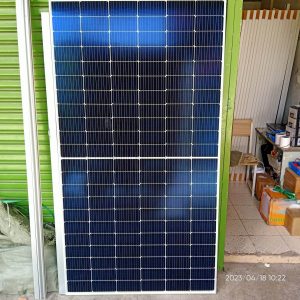Introduction
Solar energy has become a cornerstone of renewable energy solutions worldwide. The efficiency and effectiveness of solar panels play a critical role in maximizing the benefits of solar energy. Understanding the factors that affect the daily output of a solar panel is essential for optimizing their performance and ensuring sustainable energy production.
Key Factors Influencing Solar Panel Output
Sunlight Exposure
- Duration of Sunlight: Solar panels require sunlight to generate electricity. The number of daylight hours directly impacts the energy production.
- Intensity of Sunlight: Solar output varies with the intensity of sunlight, which depends on the time of day and weather conditions.
Panel Orientation and Tilt
- Orientation: The direction that the solar panels face affects their ability to capture sunlight. In the northern hemisphere, south-facing panels typically receive the most sunlight.
- Tilt Angle: The angle at which panels are tilted influences their sun exposure. The optimal tilt angle varies with geographical location and season.
Temperature
- Heat Impact: Contrary to popular belief, higher temperatures can reduce solar panel efficiency. Panels operate best in mild temperatures.
Panel Specifications
- Power Capacity: The power rating of a solar panel, measured in watts, signifies its maximum output under ideal conditions.
- Size and Dimensions: Larger panels have more surface area to absorb sunlight, potentially increasing output.
- Efficiency Rating: This indicates how effectively a panel converts sunlight into electricity. Higher efficiency ratings mean better performance.
Age and Wear
- Degradation Over Time: Solar panels slowly degrade over time, leading to a gradual decrease in output.
- Maintenance and Cleaning: Regular cleaning and maintenance can mitigate the effects of aging and wear.
Environmental Factors
- Shading: Obstructions like trees or buildings can cast shadows on panels, significantly reducing their output.
- Weather Conditions: Cloud cover, rain, and snow can obstruct sunlight, impacting solar output.
System Components
- Inverters and Wiring: The efficiency of inverters and the quality of wiring in the solar system also affect the overall output.
Impact on Cost and Value
- Initial Costs: The cost of solar panels depends on their specifications, size, and efficiency.
- Energy Savings: The efficiency of solar panels directly affects the amount of electricity bill savings.
- Return on Investment: Higher output panels can offer a quicker return on investment through energy savings.
Conclusion
The daily output of a solar panel is influenced by a multitude of factors ranging from environmental conditions to technical specifications. By understanding these factors, one can optimize the performance and maximize the benefits of their solar energy system.
For detailed insights on solar panel output per day, explore this comprehensive resource: Solar Panel Output.
